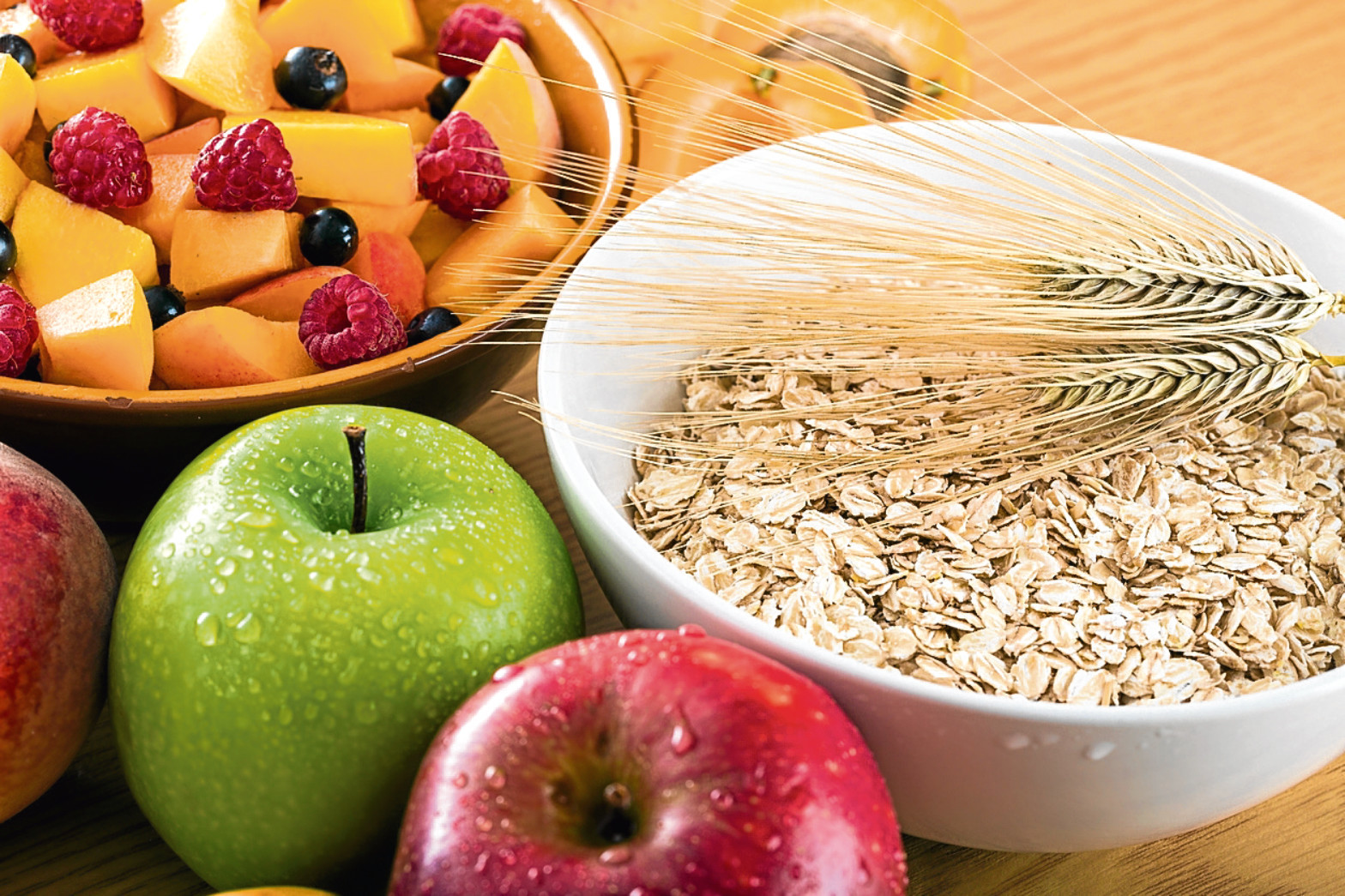
WE’VE all heard the cries about eating more fibre because it’s good for us.
But are we really sure why we’re consuming it — or at least trying to — or are we simply doing what we’re told?
We’re going to look at the role dietary fibre plays in our health and why it is so important for us.
The recommendation for adults is to eat around 18g of dietary fibre per day, but most people only get 12-14g a day and some people eat very little fibre at all.
But that’s more likely to be through a lack of awareness of what fibre is, what it does and where best to find it.
As it stands, there are two main types of dietary fibre and they both have different, but equally-important, roles to play in maintaining our body’s health — they are called insoluble and soluble fibre.
Insoluble fibre is the stuff we think of when we conjure up images of “fibre-containing foods”.
These used to be commonly known as “roughage”.
This fibre cannot be dissolved or really digested by our bodies at all.
In fact, it’s so robust that it passes through our digestive system mostly unchanged.
It acts a bit like a sponge and absorbs water, adds bulk to stools, and allows waste to be passed through our bowels more quickly.
It could therefore be assumed that insoluble fibre is not really that essential in our diets, but that is not the case.
Although adding bulk to waste products doesn’t sound particularly useful, studies over the years have shown that insoluble fibre is crucial to the health of our lower digestive tract.
Our large intestines contain millions of bacteria that help maintain the correct acidity in our digestive system and protect against infection.
We hear a lot about “good bacteria” these days.
What we hear less about, however, is that much of the insoluble fibre we consume provides the correct environment for these good bacteria to thrive and without them, our gut health would definitely suffer.
In other words, the good bacteria need proper conditions and this is where the insoluble fibre-rich roughage comes in.
A good intake of insoluble fibre has been shown to be protective against developing certain types of bowel cancer, as well as helping to prevent constipation and other conditions such as piles (haemorrhoids) and diverticular disease.
This is when small bulges or pockets develop in the intestine and become inflamed.
Many people also find increasing their fibre intake can help with appetite control and weight management.
Filling up on fibre-rich foods that take a bit more effort to digest means your body has to work a little harder during the entire process.
This, in turn, raises your metabolic rate and even if it is only a slight increase, over time, that can help with weight loss.
More recent studies have also shown that insoluble fibre is not always completely indigestible.
It can be fermented by the bacteria in our guts to produce certain important short-chain fatty acids, which can then be absorbed and used by our bodies as fuel.
But that can all sound a little scientific and complicated.
The most important thing for us is to keep our intake varied and regular.
So what are the best sources of insoluble fibre in our diets?
- Wholegrain cereals — wheat, bran and brown rice as well as the products made from them are very rich sources of insoluble fibre. Examples would be wholegrain breakfast cereals and wholegrain or granary style breads.
- Nuts and seeds — almonds are an especially good source of insoluble fibre.
- Fruits — most fruits are a great source of insoluble fibre, especially those with edible skins and seeds. The richest sources of insoluble fibre are found in the skins of fruits and vegetables.
- Pulses — lentils, chickpeas and most types of beans are also high in insoluble fibre.
Have a mix of these in your diet, and you’ll be doing well.
The second type of fibre we need to ensure we are consuming is soluble.
As the name suggests, this type of fibre can be dissolved and is readily digested by our bodies.
Eating a diet rich in soluble fibre can help control cholesterol levels in our blood — something a vast amount of us are keen to do.
For this, there is a special form of soluble fibre called beta-glucans and it is found in oats and barley.
You can find it in other grains as well, but oats and barley contain much higher levels.
It is for this reason that we are often told to eat porridge and other oat-containing products to help lower cholesterol levels.
Soluble fibre is not only beneficial for helping to control cholesterol levels, it can also help slow down the absorption of sugars into our bloodstream.
This is a very useful function for all of us but is especially important for people living with diabetes.
If sugar is absorbed slowly into our bloodstream then we don’t see sudden increases in our blood sugar level. It also means we are less likely to suffer from “sugar crashes” or hypoglycaemia.
Maintaining stable and predictable sugar levels is an important part of staying healthy.
Besides oats, there are other sources of soluble fibre, too, which will help keep your digestion running smoothly and efficiently.
- Pulses — kidney beans, black beans, lentils and peas.
- Vegetables — almost all are great sources of fibre, but especially broccoli, sweet potato and Brussels sprouts.
- Fruits — again, almost all will contain a good mixture of fibres but apples, strawberries, dates, peaches and pears are especially rich sources.

Enjoy the convenience of having The Sunday Post delivered as a digital ePaper straight to your smartphone, tablet or computer.
Subscribe for only £5.49 a month and enjoy all the benefits of the printed paper as a digital replica.
Subscribe